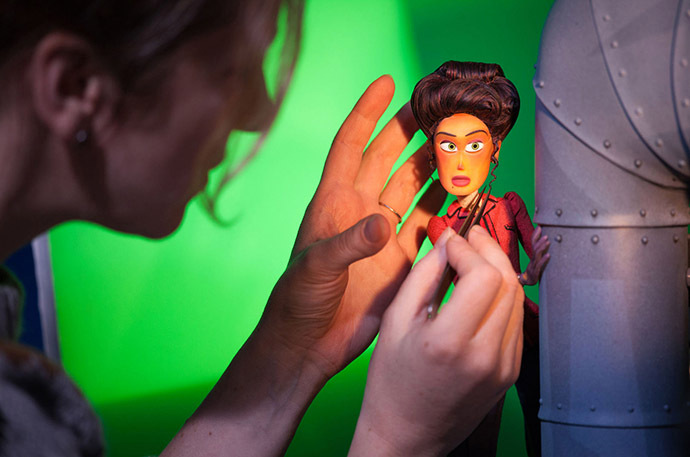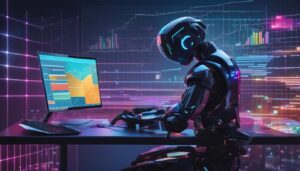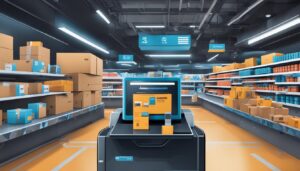
Laikas group was also believing about tempering the software applications objective for quality. They preferred an option that might separate the lines an artist would wish to tidy up while protecting the flaws developed by human hands, which include credibility. The device would take a fracture at it,” states Emerson.
Laika went the Xeon path for its very first venture into expert system partly due to the fact that Intels processors were presently powering the studios workstations and render farm. “If the utilized device finding group at Intel was going to construct something, we understood they would have the ability to boost it for those CPUs,” mentions Stringer. And due to the reality that the toolset is constructed making use of oneAPI elements, its code will not need to be reworded to support future architectures.
The marital relationship of art and innovation cultivates a roadmap for development.
Thanks to advances in 3D printing and expert system, Laikas artists are producing more emotive characters that appear like action figures come to life. The studio continues developing a century-old craft totell stories in methods that would not have been possible in years past Possibly thats why all 5 of its motion pictures were Academy Award candidates for Finest Animated Function.
Above: A future with complete character rotomation would make it possible for Laikas animators to work better by preventing numerous direct exposures for scenes with digital characters in the background.
Moving on, Emerson wishes to integrate bigger environments and larger crowds into Laikas tasks. “You would never ever see substantial crowds in stop-motion movies prior to Laika due to the reality that there simply isnt the capability to develop that lots of puppets.
Laika currently has experience including digital perk making use of mattes, alpha channels, and rotoscoping. What would be astounding with this is if we might do total character rotomation, to separate characters from animation plates without requiring to put green screens behind them. And after that stop motion animators would not require to stop to put the green screen in.
Development plays a supporting function to Laikas art. Theres presently a lot of tech associated with Laikas newest functions. Fortunately, software application tools built making use of a merged programs design make it basic to support whatever hardware Laika needs to speed up the future of stop-motion animation.
Go Deeper: Laika Studios & & Intel Join Forces to Expand Whats Possible in Stop Motion Filmmaking
.
This post belongs to the Innovation Insight series, enabled with funding from Intel.
Laika, the stop-motion animation studio best understood for its function motion pictures Coraline, ParaNorman, The Boxtrolls, Kubo and the 2 Strings, and Missing Out On Link, records and customizes 10s of countless frames for each of its movies. Laika coordinated with Intel to develop software application tools able to save time and keep its animators focused on their craft.
The studio is training neural networks to identify and help repair lines and other artifacts on the faces of its puppets throughout post-production. These artifacts are basic in the approach Laika constructs its characters, so the AI requires to be trained to recognize the upseting lines, trace them through a procedure called rotoscoping, and track them. At the really same time, Laika wants to keep the particular flaws of its handcrafted art work, leaving artists in charge of what goes and what stays.
If all goes according to technique, you will thrill in the item of Laikas efforts in the studios next film.
Bottom line
Developing a modern stop-motion function film is more detailed than ever; Laikas latest task, Missing Out On Link, consisted of more than 106,000 various 3D-printed faces.
Cleaning up undesirable lines is currently a handbook and repeated treatment, making it a perfect target for expert system.
Laika teamed with Intel to build tools based upon the oneAPI reveals style. These take advantage of the studios existing Xeon CPU-based centers to accelerate digital paint and rotoscoping tasks.
A timeless film-making technique pleases modern-day innovation
In stop-motion animation, items are photographed, moved a little, and photographed as soon as again, over and over. Skimming the still images quickly enough produces the impression of motion. Its a method with origins in the 19th century.
Much people were selected stop-motion art jobs as early as elementary school. If we evaluated those amateur efforts today, we d definitely discover some quite severe technical flaws, such as joints in the clay we used to form our puppets and positioning issues with our video cams. Plus, theres just a lot innovative expression to extract from items lying around your home.
Expert stop-motion animators need to get rid of those very same problems, while taking storytelling and artistry to the next level. In a current webinar, Steve Emerson, Laikas visual impacts supervisor, stepped through the studios labor-intensive treatment.
Above: Stop-motion animation is extreme work. What we do here at Laika is we take puppets– completely articulated puppets– and we establish small sets to put those puppets within, with real-world light, and we capture them one frame at a time. For every single frame throughout one second of movie, we place a puppet, we take a direct exposure, we move the puppet or something else within that environment in the smallest of increments, and we take another direct exposure.
Laikas most current task, Missing Out On Link, had a runtime of 93 minutes. With 24 frames in a 2nd, that recommends the studios animators required to thoroughly collect almost 134,000 frames. According to Emerson, each animator can catch someplace in between 3 and a half or 4 seconds each week.
Developing a more interesting stop-motion experience
Laikas jobs prosper in part due to the fact that they press the limitations of what audiences expect from stop-motion animation. … we get here making use of development,” states Laikas Emerson.
Prior to puppets ever make it to the set, Laikas facial animation group uses software application to figure out how a shot is going to look, and after that 3D prints the faces ahead of time. For Missing Out On Link, Laika produced 106,000 different faces made up of overlapping textured parts, such as skin, tongues, teeth, and eyebrows. Each face was divided through the center, using animators an opportunity to snap in functions on a per-frame basis and attain a bigger range of expressions making use of less facial elements.
Above: More than 2,000 character efficiencies that needed cosmetic deal with rotoscoping and scene elimination. Image Credit: Laika
Picture youre painting a space. Prior to starting on the walls, you tape off the ceiling and floorboards to safeguard them. Although the action consists of significant time to the treatment, its needed for a tidy end product. The very same selects rotoscoping. And as 3D printing development establishes, enabling Laika to develop far more shapes for substantially nuanced efficiencies, rotoscoping them all gets back at harder.
Making use of AI for rotoscoping (without impacting the art).
Laikas option to clean up the lines on its puppets faces wasnt made gently. The group comprehended it d be a good deal of work to remove the artifacts in every frame of the motion picture. Ultimately, nevertheless, producing a more effective psychological connection with more realistic-looking characters took precedence.
To help speed up the procedure of rotoscoping a growing library of face shapes, the group began having a look at artificial intelligence options using Xeon CPUs with the hope of a 50% time expense savings. Along the approach, it made a number of observations that ran counter to common tenets about AI.
The used device discovering group at Intel assisted Laika identify that feeding its neural network fantastic deals of fundamental training info about puppets wasnt as valuable as producing a toolset specific to a handful of characters.
” It wound up that, when you focus in on this particular task of producing a rotoshape, which is a location you wish to mask or track, from tracking points on the face, an excellent 5 or 6 shots of correctly designed ground fact details was enough to train the system,” mentions Jeff Stringer, director of production development at Laika.
What we do here at Laika is we take puppets– absolutely articulated puppets– and we develop tiny sets to put those puppets within, with real-world light, and we capture them one frame at a time. Prior to puppets ever make it to the set, Laikas facial animation group makes use of software application to figure out how a shot is going to look, and after that 3D prints the faces in advance. Laikas choice to clean up the lines on its puppets faces wasnt made gently. Laika went the Xeon path for its extremely first endeavor into artificial intelligence partially due to the truth that Intels processors were presently powering the studios workstations and render farm. “You would never ever see huge crowds in stop-motion films prior to Laika due to the fact that there just isnt the capability to develop that lots of puppets.






